
Format: Hardback
Pages: 140
ISBN: 9781907586163
Pub Date: 30 Apr 2013
Series: Monograph Series
Description:
Excavations at Plantation Place provided evidence for medieval and early post-medieval occupation of an entire block in the eastern part of the City of London near the Thames waterfront. Contemporary ground surfaces and buildings did not survive, but associated pits and wells have been related by documentary and cartographic research to identified tenements in this thriving area of shops, warehouses and merchants’ residences. Important assemblages from pits and wells include vessels used in refining gold, crucibles and moulds from bronze casting, and the largest assemblage of late medieval Islamic-style glass yet found in Britain, alongside Middle Eastern ceramics.
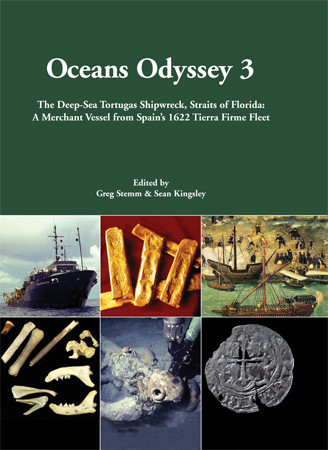
Format: Hardback
Pages: 201
ISBN: 9781782971481
Pub Date: 30 Apr 2013
Description:
In 1990 Seahawk Deep Ocean Technology of Tampa, Florida, commenced the world’s first robotic archaeological excavation of a deep-sea shipwreck south of the Tortugas Islands in the Straits of Florida. At a depth of 405 meters, 16,903 artefacts were recovered using a Remotely-Operated Vehicle. The wreck is interpreted as the Buen Jesús y Nuestra Señora del Rosario, a small Portuguese-built and Spanish-operated merchant vessel from the 1622 Tierra Firme fleet returning to Seville from Venezuela’s Pearl Coast when lost in a hurricane.
Oceans Odyssey 3 introduces the shipwreck and its artefact collection – today owned and curated by Odyssey Marine Exploration – ranging from gold bars to silver coins, pearls, ceramics, beads, glass wares, astrolabes, tortoiseshell, animal bones and seeds. The Tortugas shipwreck reflects the daily life of trade with the Americas at the end of the Golden Age of Spain and presents the capabilities of deep-sea robotics as tools for precision archaeological excavation.
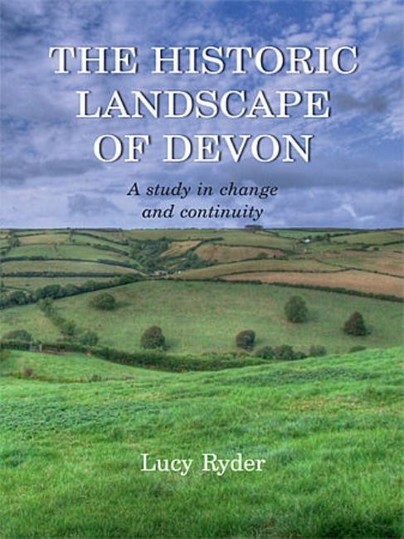
Format: Paperback
Pages: 256
ISBN: 9781905119387
Pub Date: 30 Apr 2013
Illustrations: col illus
Description:
This book discusses the 19th-century historic landscape of Devon though the creation, manipulation and querying of a Geographical Information Systems (GIS) database to examine physical evidence of change and development through field and settlement patterns. Making use of tithe surveys, the relationship between field and settlement morphologies and patterns of landholding is discussed for three case-study areas in Devon, developing the idea of landscape pays and the identification of regional differences in the study of the historic landscape.

Format: Paperback
Pages: 220
ISBN: 9781782971979
Pub Date: 30 Apr 2013
Series: TRAC
Description:
The twenty-second Theoretical Roman Archaeology Conference (TRAC) was held at the Goethe-University Frankfurt am Main in spring 2012. During the three-day conference fifty papers were delivered, discussing issues from a wide range of geographical regions of the Roman Empire, and applying various theoretical and methodological approaches. An equally wide selection of subjects was presented: sessions looked at Greek art and philhellenism in the Roman world, the validity of the concept of ‘Romanisation’, change and continuity in Roman religion, urban neighbourhood relations in Pompeii and Ostia, the transformation of objects in and from the Roman world, frontier markets and Roman archaeology in the Provinces.
In addition, two general sessions covered single topics such as the ‘transvestite of Catterick’, metal recycling or Egyptian funeral practice in the Roman period. This volume contains a selection of papers from all these sessions.
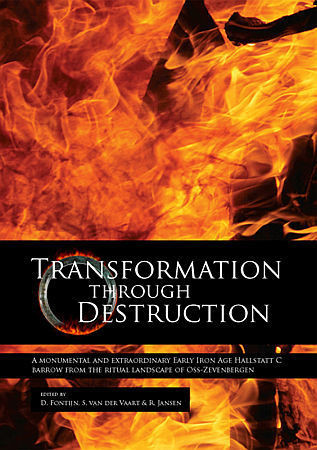
Format: Paperback
Pages: 348
ISBN: 9789088901027
Pub Date: 30 Apr 2013
Description:
Some 2800 years ago, a man died in what is now the municipality of Oss, the Netherlands. His death must have been a significant event in the life of local communities, for he received an extraordinary funeral, which ended with the construction of an impressive barrow. Based on the meticulous excavation and a range of specialist and comprehensive studies of finds, a prehistoric burial ritual now can be brought to life in surprising detail.
An Iron Age community used extraordinary objects that find their closest counterpart in the elite graves of the Hallstatt culture in Central Europe. This book will discuss how lavishly decorated items were dismantled and taken apart to be connected with the body of the deceased, all to be destroyed by fire. In what appears to be a meaningful pars pro toto ritual, the remains of his body, the pyre, and the objects were searched through and moved about, with various elements being manipulated, intentionally broken, and interred or removed. In essence, a person and a place were transformed through destruction. The book shows how the mourners carefully, almost lovingly covered the funeral remains with a barrow. Attention is also given to another remarkable monument, long mound 6, located immediately adjacent to mound 7. Excavations show how mound 7 was part of an age-old ritual heath landscape that was entirely restructured during the Early Iron Age, when it became the setting for the building of no less than three huge Hallstatt C barrows. Thousands of years later, during the Late Middle Ages, this landscape underwent a complete transformation of meaning when the prehistoric barrows became the scenery for a macabre display of the cadavers of executed criminals.This publication is part of the Ancestral Mounds Research Project of the University of Leiden.
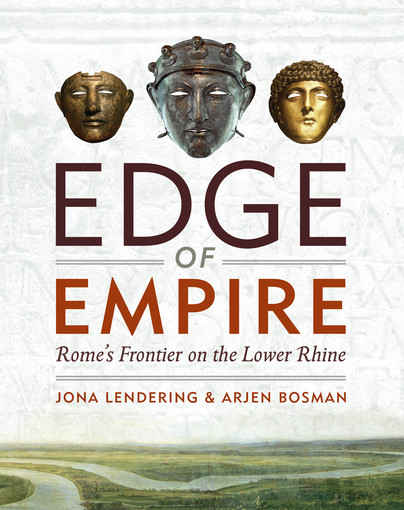
Format: Hardback
Pages: 194
ISBN: 9789490258054
Pub Date: 22 Apr 2013
Description:
Every ancient author writing about the Low Countries, was preoccupied with the complete contrast between the civilized people of the Roman Empire and the tribes of noble savages or barbarians living outside it. Julius Caesar exploited this preconception to enhance his own reputation, boasting that he had overcome the "bravest of all Gauls"; Tacitus employed the same stereotypes when he described the Batavian Revolt; and, in Late Antiquity, the Franks were still described as resembling monsters.The reality was different.
The presence of the Roman army along the River Rhine radically changed the way of life in the small Roman province of Germania Inferior, and the need to maintain and feed this large army became a significant incentive for economic change. The tribes living along the lower reaches of the Rhine and close to the North Sea gradually began to resemble their occupiers.Historian Jona Lendering and archaeologist Arjen Bosman have combined their considerable expertise to create a successful synthesis of historical and archaeological evidence, in this history of Rome s Lower Rhine frontier.
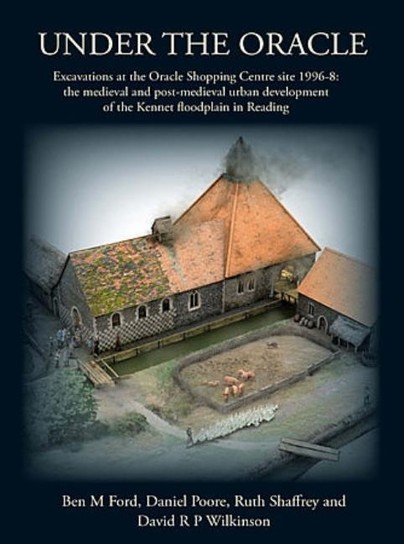
Format: Hardback
Pages: 340
ISBN: 9781905905270
Pub Date: 01 Apr 2013
Series: Thames Valley Landscapes Monograph
Description:
Excavations carried out by Oxford Archaeology in advance of the building of the Oracle shopping centre revealed a long sequence of development of the Kennet floodplain at Reading. This volume reports on the substantial evidence recovered for medieval and post-medieval water management, milling at the Minster Mill and St Giles Mill, the tanning, leather working and dyeing industries, and an unusual building interpreted as the 12th- to 13th-century cookhouse of Reading Abbey. The stories of two well-known Reading sites, the Oracle Workhouse and the Yield Hall, are followed from the medieval period up to the 19th century.
Substantial specialist reports include pottery, glass, leatherworking, dendrochronology and clay pipes.

Format: Paperback
Pages: 144
ISBN: 9780955353444
Pub Date: 31 Mar 2013
Illustrations: 13 b/w and 41 colour illustrations
Description:
This volume contains the results of four archaeological projects undertaken within the historic suburbs of Bristol. Excavations at nos 26–28 and at nos 55–60 St Thomas Street were both within the 12th-century planned suburb of Redcliffe, just to the southeast of the medieval city. Investigations at Harbourside and at Cabot House, Deanery Road, were undertaken in the medieval district of Billeswick, to the southwest of the city centre and in the vicinity of Bristol Cathedral, formerly the church of the 12th-century St Augustine’s Abbey.
However, it is the general lack of evidence for significant development at these sites throughout the medieval and post-medieval periods and up to the beginning of the 18th century that provides a common theme.The scarcity of evidence for medieval and post-medieval development at the Billeswick sites, Cabot House and Harbourside, is unsurprising as both were in the ownership of the abbey or cathedral throughout this period, and were clearly of value as undeveloped land, either as parkland (as at Cabot House) or meadow (i.e. Canon’s Marsh at Harbourside). The dearth of evidence from the St Thomas Street sites in Redcliffe was more unexpected, though this appears to corroborate documentary evidence suggesting that this part of the suburb remained something of a backwater into late post-medieval times. At nos 55–60, there was little evidence for anything more substantial than simple boundaries and timber structures, perhaps used for drying cloth, until the beginning of the 18th century. At nos 26–28 there was no evidence for tenements until late into the post-medieval period and the site may well have been part of a medieval grange. The development of the first substantial buildings at both St Thomas Street sites, of new streets and terraces at Cabot House, and of the ropewalks and later industrial development of Canon’s Marsh at Harbourside, all reflect the rapid expansion and building boom Bristol enjoyed in the 18th century, largely a result of the city’s involvement in the Atlantic trade.
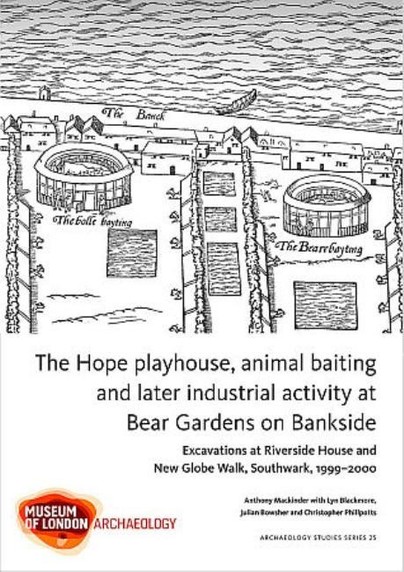
Format: Paperback
Pages: 94
ISBN: 9781907586200
Pub Date: 31 Mar 2013
Series: MoLAS Archaeology Studies Series
Description:
Southwark’s famous Bankside was long known as an entertainment area up to the 17th century. This volume provides evidence for the Barge, one of the medieval stewhouses (tavern/brothel) and the later Hope, a dual purpose building hosting animal baiting as well as play performances. The next phase in Bankside’s history was industrial and its glass and pottery products of the 17th and 18th centuries were much sought after.
Evidence for their production was found on the sites. The remains of 19th-century brick buildings relate to a known iron foundry in the area.

Format: Paperback
ISBN: 9781782971566
Pub Date: 19 Mar 2013
Series: Current Research in Egyptology
Description:
The thirteenth Current Research in Egyptology (CRE) conference was held from the 27th – 30th March 2012 at the University of Birmingham and once again provided a platform for postgraduates and early career Egyptologists, as well as independent researchers, to present their research. These proceedings for CREXIII represent the wide-range of themes that were offered by delegates during the conference, and cover all periods of Egyptian history; from Predynastic skeletal analysis through to Egyptology during the Islamic Middle Ages. These twelve papers include gender studies, analysis of Egyptian festivals, revisiting of chronological models, archaeological reanalysis of ancient landscapes, as well as social, historical and linguistic studies allowing a new appraisal of many aspects of Egyptian culture and history.

Format: Hardback
Pages: 272
ISBN: 9781842175101
Pub Date: 08 Mar 2013
Description:
Fifteen papers present the results of new research into various aspects of material culture and historical archaeology that reflect culture, trade and social interaction shared by Britain and Colonial America during the Tudor and Stuart periods. Recurrent themes include the use, significance and, in some cases, trade in specific types of pottery, including the ubiquitous stoneware flasks or canteens for sailors and solders on both sides of the Atlantic, and commodities such as wine and copper objects; the architectural history of manor houses and archaeology of plantations; aspects of the historical archaeology of Jamestown and Martins Hundred; the role of specific individuals in the development of Tudor-Stuart life and our new understand of a London destroyed the Great Fire based on Noel Humes rescue digs in a London destroyed by the Blitz. Overall the papers reflect the wide-ranging interests of Ivor Noël Hume, to whom the volume is dedicated.

Format: Paperback
Pages: 88
ISBN: 9781782971443
Pub Date: 07 Mar 2013
Series: Archaeology Data Service & Digital Antiquity Guides to Good Practice
Description:
Anyone who has tried to archive archaeological geophysics data will have wondered what might be the most comprehensive and practical approach. This question is addressed by this Guide’s extensively revised 2nd edition, which systematically explores what should be included in an Archive, illustrated with relevant examples. A conceptual framework is developed that allows assembling data and meta-data so that they can be deposited with an Archiving Body.
This framework is also mapped onto typical database structures, including OASIS and the English Heritage Geophysics Database. Examples show step-by step how an Archive can be compiled for deposition so that readers will be able to enhance their own archiving practice. Geophysical data are sometimes the only remaining record of buried archaeological features when these are destroyed during commercial developments (e.g. road schemes). To preserve them in an Archive can therefore be essential. However, it is important that data are made available in formats that can still be read in years to come, accompanied by documentation that gives meaningful archaeological context. This Guide covers the creation of the necessary metadata and data documentation. There is no point preserving data if they cannot be used again; therefore this Guide is essential for anyone using geophysical data.
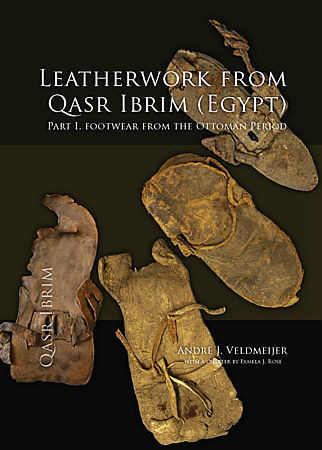
Format: Paperback
Pages: 462
ISBN: 9789088900969
Pub Date: 28 Feb 2013
Description:
Throughout its long history, stretching from the 25th Dynasty (c. 752-656 BC) to the Ottoman Period (c. 1500-1811 AD), Qasr Ibrim was one of the most important settlements in Egyptian Nubia.
The site has produced an unprecedented wealth of material and due to the – even for Egypt – extraordinary preservation circumstances, includes objects that are made of perishable organic materials, such as wood, leather, and flax.The present volume focuses on one of these groups: footwear that is made from leather and dated to the Ottoman Period. The footwear, recovered during the years that the Egypt Exploration Society worked at the site, is described in detail, including a pictorial record consisting of photographs and drawings (both technical and artist’s impressions). This is the first time that Ottoman footwear from Egypt (and outside of Egypt) has been analyzed in detail. The preliminary analysis focuses on footwear technology, within the framework of the Ancient Egyptian Footwear Project (AEFP; see www.leatherandshoes.nl). A broader interpretation will be combined with the results of the analyses of the finds from the other epochs of Qasr Ibrim’s history, such as the age of Christianity and the Meroitic Period.

Format: Paperback
Pages: 272
ISBN: 9781902771939
Pub Date: 28 Feb 2013
Description:
This volume presents the conclusions of a research assessment funded by English Heritage which drew together the broad community of scholars interested in marine and maritime affairs, with a remit of both quantifying the known record and establishing a clear research agenda for the future. The result is an unrivalled exploration of our maritime heritage and a challenging agenda for the future.Britain is a maritime nation.
Thus understanding the changing record of people&supl;s relationships with, and use of the sea is key to interpreting the archaeological record. People and the Sea considers all aspects of our maritime heritage; from the submerged landscapes created by changes in sea- level over the last million years, to the physical development of the modern coastline, through to ports, their hinterlands and associated maritime communities. It investigates the nature of seafaring, its associated material culture as well as people&supl;s changing perceptions and interactions with the sea. Chronological chapters, from the Palaeolithic to the 20th century, all consider a number of key themes, exploring both the current state of knowledge and priorities for future research. While the focus is on England, the themes explored are applicable to any coastal community, both in the UK and the near Continent. Written by leading academics, in consultation with numerous specialists, People and the Sea provides an unrivalled exploration of our maritime heritage and sets a challenging agenda for future research.
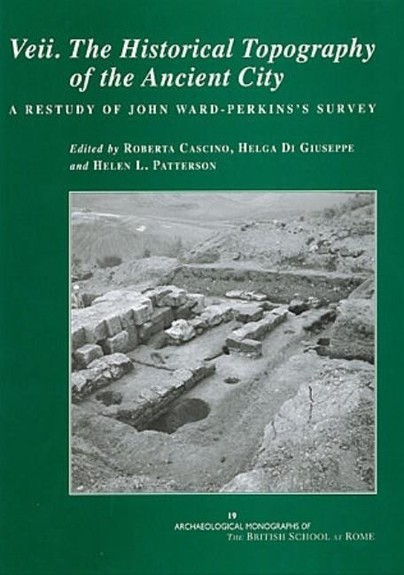
Format: Hardback
Pages: 432
ISBN: 9780904152630
Pub Date: 21 Feb 2013
Series: Archaeological Monographs of the British School at Rome
Illustrations: 142 illus, 2 colour plates
Description:
During the nineteenth century, antiquarians such as William Gell and George Dennis visited the ancient city of Veii, some 15 km north of Rome, and noted the rapid destruction of its archaeology. The city continued under to be under threat, and in the 1950s was the subject of ground-breaking survey and excavation by John Ward-Perkins. However, the results of his fieldwork were never published fully.
Knowledge and understanding of material culture (especially pottery, votive objects and architectural terracottas) has increased dramatically over the past fifty years, so allowing the authors to reveal the full potential of the data. This publication reaffirms many of Ward-Perkins’s original insights, and contextualizes his research within the new discoveries of the past fifty years; whilst an important contribution to our knowledge, it is also a spur to further work.

Format: Paperback
Pages: 162
ISBN: 9780904152623
Pub Date: 21 Feb 2013
Series: Archaeological Monographs of the British School at Rome
Illustrations: 32 illus, 4 colour plates, CD Rom
Description:
The destruction of Pompeii in ad 79 provides a unique opportunity to explore the use of everyday items. It allows us to identify the source and variety of products available within the city, and enables us to track changes in the consumption of goods over time. In this volume, Jaye McKenzie-Clark presents the far-reaching results of her examination of the red slip tableware within three regions of the city.
It pinpoints the initial supply and use of Vesuvian Sigillata, and investigates factors that may have led to the popularity of this style of pottery. The investigation maps the on-going manufacture of these ceramics and identifies changes in production and consumption up to the time of the eruption. Examination of the distribution within contexts of different social use also reveals distinct patterns of consumer demands and consumption within Pompeian society. Such research helps us to explore and understand the use of goods within the city of Pompeii and throughout the Roman world, and also has the potential to shed light on patterns of behaviour in modern consumer societies.

















